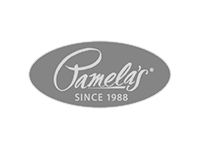Gluten Free
What does following a gluten-free diet mean? That you're embarking on an easy diet with a wide range of health-promoting effects. Instead of dwelling on what you’re giving up, consider that you’re going to enjoy a whole new world of delicious food options to meet your special dietary needs. You’ll be eating seasonally, choosing more fresh fruits and vegetables, focusing on meats, seafood, poultry, legumes, lentils, corn, and rice, and discovering fascinating ancient grains such as quinoa, amaranth, and millet. You’ll be able to eat potatoes, eggs, most cheeses, even chocolate (!)—and enjoy them without guilt because you’ll be taking good care of your body. In fact, you’ll probably end up eating—and feeling—better than ever!
Visit this page for more information about living Gluten Free
---
We carry a large variety of gluten free items, the brands listed below represent just some of the offerings we carry















More Diets

Related Topics
-
What’s for Dinner Tonight?
-
USDA MyPlate Guidelines
-
Vegetables
-
Cooking with Fresh Herbs
-
Get Your Kids to Eat Healthfully
- By Judith H. Dern
Love Those Leafy Greens All Year Long
Move over spinach—the greens are here! Beet greens, bok choy, broccoli raab, collard greens, kale, mustard greens, and Swiss chard. Humble and often over-looked, leafy greens are super-nutritious. According to Steven Pratt, MD, coauthor of SuperFoods, dark leafy greens, like their cousin spinach, provide a “synergy of multiple nutrients/phytonutrients” including essential vitamins, minerals, fiber, and omega-3 fatty acids. A bonus: greens are utterly simple to prepare and available year-round.
Greens vary widely in taste and appearance
Find your favorites
All in the family, yet different, greens vary widely in taste and appearance. Check out these easy-to-find varieties:
- Beet greens—Leafy tops cut from beets have delicate flavor similar to Swiss chard when quickly boiled, steamed, or sautéed.
- Bok choy—Commonly found with crunchy white stalks and dark green leaves; mildly flavored, eaten raw or cooked; perfectly complemented by Asian seasonings.
- Broccoli raab—Smaller than regular broccoli, but with more leaves, smaller flowerets, and a gently bitter taste.
- Collard greens—A type of cabbage with large, flat, paddle-shaped leaves; a traditional “soul food” staple boiled a long time with ham hocks or bacon.
- Kale—A colorful member of the cabbage family with wrinkled, blue- or purple-tinged leaves; remove tough center stem and prepare like spinach.
- Mustard greens—Another popular ingredient with a peppery taste and bright green leaves (or many different colors in the Chinese varieties).
- Swiss chard—A beet family member with dark green wrinkled leaves and reddish (rhubarb chard), pale green, or multicolored stems, with a rich, earthy taste.
Stir it up
Easy and fast, stir-frying greens—just long enough to wilt the leaves—is a tasty preparation method. Use one kind or a mixture according to what’s in season. Buy 1 1/2 to 2 (680 to 907 g) pounds to serve four people.
- Thoroughly wash leaves, discarding any discolored ones, and trim stem ends. Coarsely chop leaves and stems.
- In a large sauté pan or wok, heat 1 tablespoon (15 ml) olive oil over high heat. Add 2 cloves minced fresh garlic and stir until golden. Add prepared greens and toss to coat with oil, adding a bit more oil if necessary. Sprinkle with salt to taste and continue tossing greens until wilted, 3 to 5 minutes. Serve as a side dish, or use as a bed for grilled fish or chicken.
For some other good greens, try Braised Greens with Lots of Garlic, and Penne with Chard, Tomatoes, and White Beans.











